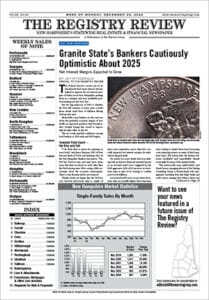Inflation jumped at its fastest pace in nearly 40 years last month, a 7 percent spike from a year earlier that is increasing household expenses, eating into wage gains and heaping pressure on President Joe Biden and the Federal Reserve to address what has become the biggest threat to the U.S. economy.
Prices rose sharply in 2021 for cars, gas, food and furniture as part of a rapid recovery from the pandemic recession. Vast infusions of government aid and ultra-low interest rates helped spur demand for goods, while vaccinations gave people confidence to dine out and travel.
As Americans ramped up spending, supply chains remained squeezed by shortages of workers and raw materials and this magnified price pressures.
The Labor Department reported Wednesday that a measure of inflation that excludes volatile food and gas prices jumped 5.5 percent in December, also the highest in decades. Overall inflation rose 0.5 percent from November, down from 0.8 percent the previous month.
Price gains could slow further as snags in supply chains ease, but most economists say inflation won’t fall back to pre-pandemic levels anytime soon.
“U.S. inflation pressures show no sign of easing,” said James Knightley, chief international economist at the financial services company ING. “It hasn’t been this high since the days of Thatcher and Reagan. We could be close to the peak, but the risk is that inflation stays higher for longer.’’
Businesses struggling to hire have hiked pay, but rising prices for goods and services have eroded those income gains for many Americans. Lower-income families have felt it the most, and polls show that inflation has started displacing even the coronavirus as a public concern.
High inflation has put President Biden on the defensive. His administration, echoing officials at the Fed, initially suggested that price increases would be temporary. Now that inflation has persisted, Biden and some congressional Democrats have begun to blame large corporations. They say meat producers and other industries are taking advantage of pandemic-induced shortages to drive up prices and profits. But even some left-of-center economists disagree with that diagnosis.
On Wednesday, the president issued a statement arguing that the drop in gas prices in December and a smaller increase in food costs showed progress.
One trend experts fear is a wage-price spiral. That happens when workers seek more pay to offset higher costs, and then companies raise costs further to cover that higher pay. On Tuesday, Federal Reserve Chair Jerome Powell told a Senate panel that he has yet to see evidence that wages are broadly driving up prices across the economy. However, his likely deputy said reining in inflation will be the Fed’s top job in the coming year.
“Our monetary policy is focused on getting inflation back down to 2 percent while sustaining a recovery that includes everyone,” Fed vice chair nominee Lael Brainard said in remarks prepared for delivery Thursday to the Senate Banking Committee, which is expected to back her nomination in the coming weeks before the full Senate confirms it. “This is our most important task.”
Brainard’s elevation of inflation-fighting as the Fed’s top goal is notable given that she is, for now, the lone Democrat on the Fed’s board and is seen as more inclined to keeping interest rates low to boost employment than many other Fed officials are. And Powell, himself, told Congress that if it becomes necessary to fight high inflation more aggressively, the Federal Reserve is prepared to accelerate the interest rate hikes it plans to begin this year. The Fed’s benchmark short-term rate, now pegged near zero, is expected to be bumped up at least three times this year.
Rate increases would make borrowing for a home or car more expensive, and therefore help to cool off the economy.
The biggest driver of inflation, according to economists, are mismatches between supply and demand. Used car prices have soared more than 37 percent over the past year because a shortage of semiconductors has prevented auto companies from making enough new cars. Supply-chain constraints have driven furniture prices nearly 14 percent higher over the past year.
Inflation could ease as the omicron wave fades and as Americans shift more of their spending to services such as travel, eating out and movie-going. That would reduce the demand for goods and help clear supply chains.
But some higher prices, such as rents, could prove to be stickier. Rental costs, which have accelerated since summer, rose 0.4 percent in December, the third consecutive monthly increase. That’s significant because housing costs make up one-third of the government’s consumer price index.


